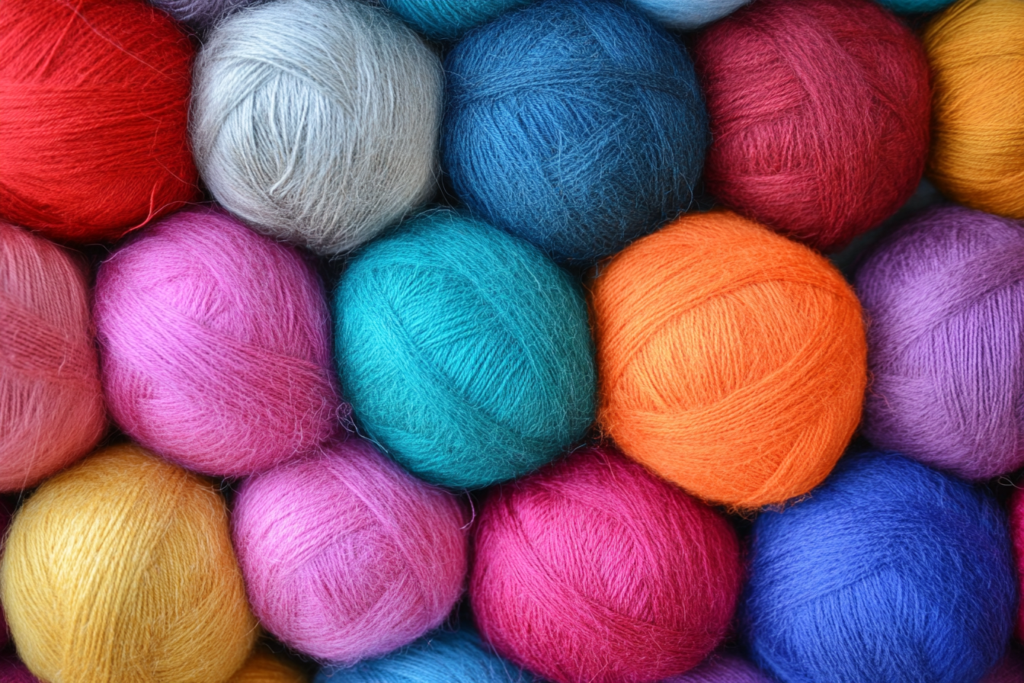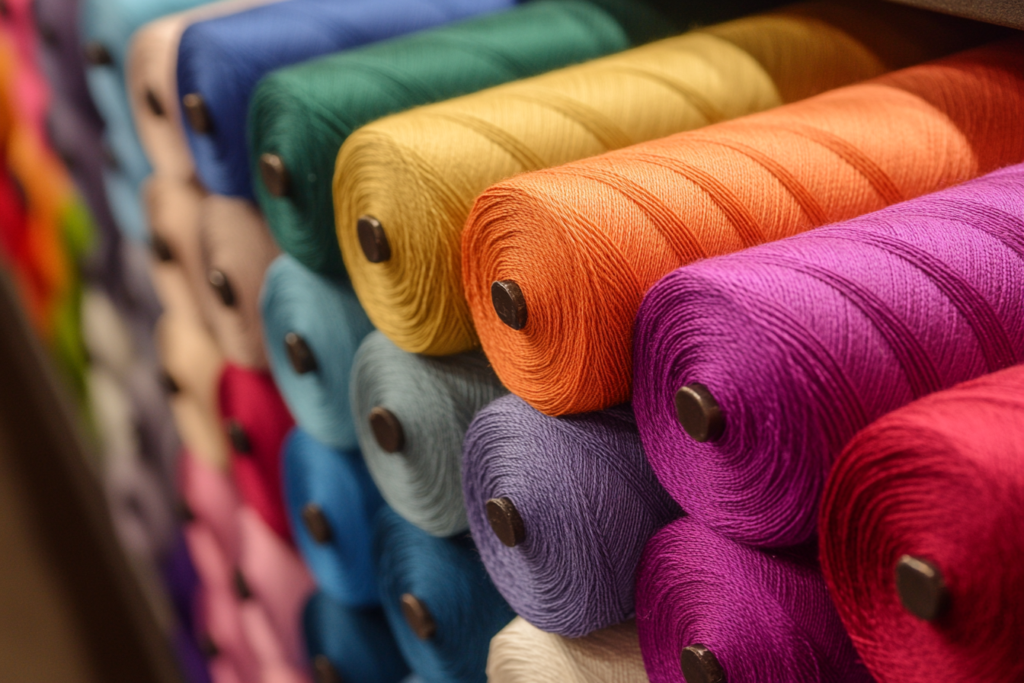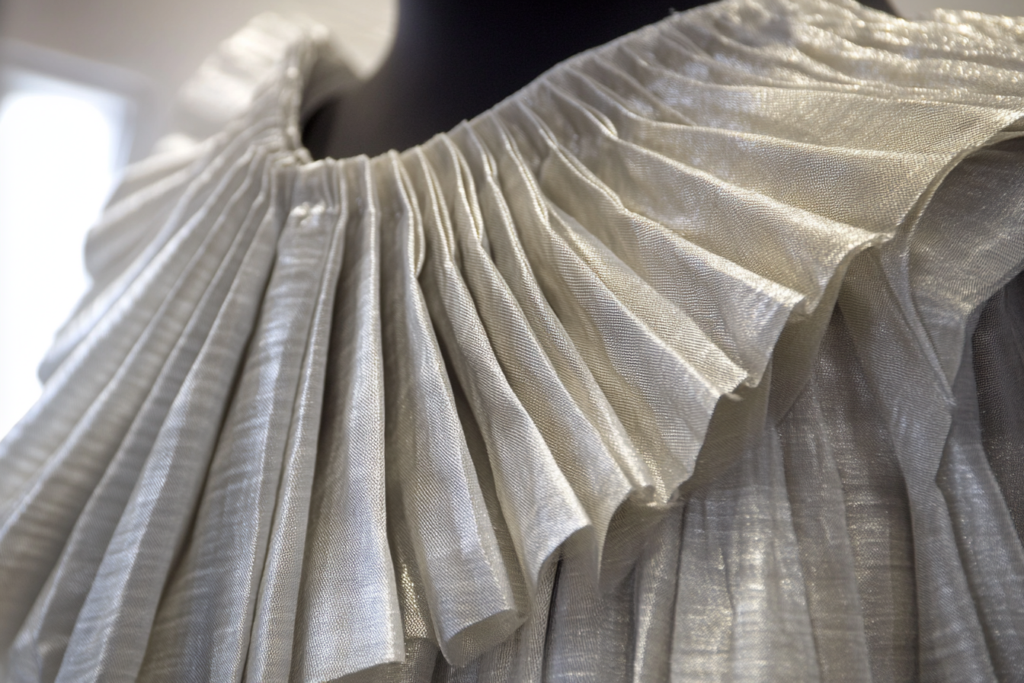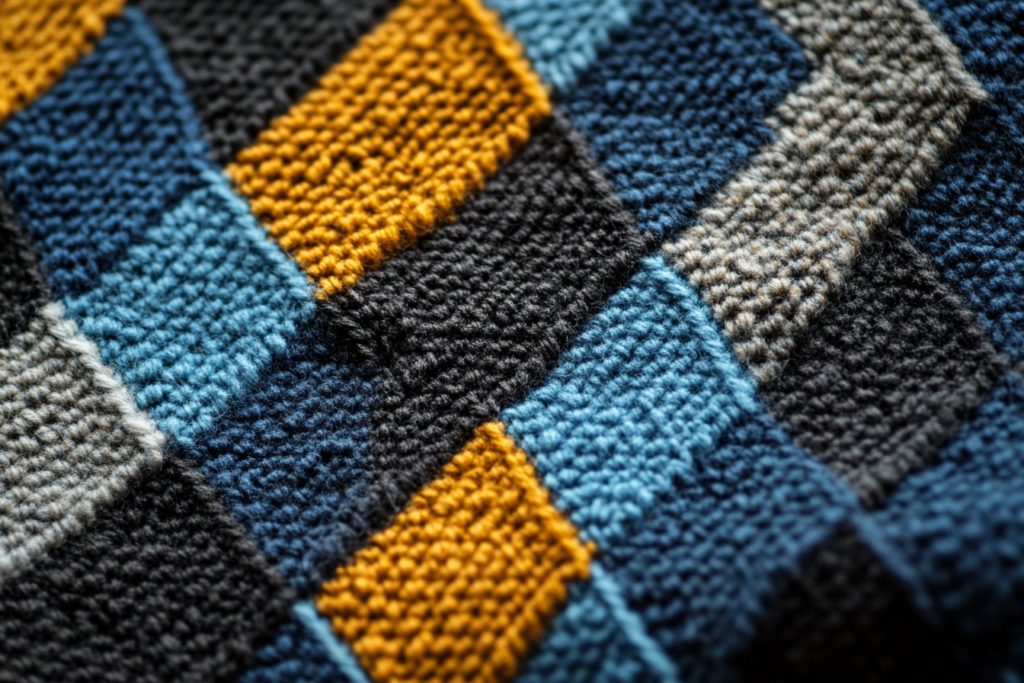Staple Fibers: The Foundation of Textile Production
Meta Description: Staple fibers are short fibers that are twisted together to form yarn. Learn how natural and synthetic staple fibers impact fabric texture, durability, and performance.
What are Staple Fibers?
Staple fibers are short textile fibers that must be twisted together to create a continuous yarn. They can be natural (such as cotton and wool) or synthetic (such as polyester and rayon) and are widely used in fabric production for apparel, home textiles, and industrial applications.
Unlike filament fibers, which are long and continuous (such as silk or synthetic monofilaments), staple fibers require spinning and twisting to form a usable thread or yarn. The length, texture, and blend of staple fibers determine the final softness, strength, and appearance of the fabric.


Key Features of Staple Fibers
✔ Short Fiber Length: Typically ranges from a few millimeters to a few inches long.
✔ Requires Spinning: Must be twisted into yarn to create a continuous strand.
✔ Can Be Natural or Synthetic: Includes cotton, wool, polyester, and rayon fibers.
✔ Soft & Breathable Texture: Creates fabrics that are comfortable and moisture-absorbent.
✔ Blends Easily with Other Fibers: Enhances durability, stretch, and fabric performance.
Types of Staple Fibers
📌 Natural Staple Fibers
Natural fibers that occur in short lengths and need to be spun into yarn.
| Fiber | Source | Characteristics |
|---|---|---|
| Cotton | Cotton plant | Soft, breathable, moisture-absorbing |
| Wool | Sheep | Warm, insulating, resilient |
| Linen (Flax) | Flax plant | Strong, durable, crisp texture |
| Hemp | Hemp plant | Eco-friendly, strong, breathable |
📌 Synthetic Staple Fibers
Man-made fibers that are cut into short lengths to mimic natural fibers.
| Fiber | Source | Characteristics |
|---|---|---|
| Polyester | Petroleum-based | Wrinkle-resistant, durable, quick-drying |
| Rayon (Viscose) | Plant-based (wood pulp) | Soft, breathable, silk-like texture |
| Acrylic | Synthetic polymer | Warm, lightweight, mimics wool |
| Nylon | Synthetic polymer | Strong, elastic, moisture-wicking |
Some staple fibers are blended to combine the best properties of natural and synthetic fibers (e.g., cotton-polyester blends for durability and comfort).
Staple Fibers vs. Filament Fibers
| Feature | Staple Fibers | Filament Fibers |
|---|---|---|
| Fiber Length | Short, discontinuous | Long, continuous |
| Texture | Soft, fluffy, breathable | Smooth, sleek, shiny |
| Spinning Required? | Yes, must be twisted into yarn | No, can be used directly as yarn |
| Examples | Cotton, wool, polyester staples | Silk, nylon, polyester filaments |
| Common Use | Apparel, home textiles, towels | Satin fabrics, hosiery, synthetic sportswear |
How Are Staple Fibers Processed?
1️⃣ Cleaning & Sorting: Natural staple fibers are cleaned and sorted based on length and quality.
2️⃣ Carding & Combing: Fibers are aligned into parallel strands to prepare for spinning.
3️⃣ Spinning & Twisting: The fibers are spun together to create yarn with the desired thickness and strength.
4️⃣ Dyeing & Finishing: The yarns are dyed, treated, and woven or knitted into fabric.
Synthetic staple fibers go through an additional cutting process to match the length of natural fibers, making them compatible for blending.
Why Are Staple Fibers Important?
1. Soft, Comfortable Fabrics
Staple fiber fabrics feel soft and breathable, making them ideal for clothing, bed linens, and upholstery.
2. Enhanced Durability
By blending staple fibers, manufacturers create long-lasting textiles that resist wear and tear.
3. Versatile for Different Textiles
From lightweight cotton shirts to warm wool sweaters, staple fibers cater to diverse fabric needs.
4. Ideal for Absorbent Textiles
Many staple fibers, especially cotton and wool, absorb moisture well, making them comfortable for all-season wear.
Best Uses for Staple Fiber Fabrics
📍 Apparel: T-shirts, jeans, sweaters, socks
📍 Home Textiles: Bed sheets, towels, curtains, carpets
📍 Outerwear: Wool coats, fleece jackets
📍 Industrial Textiles: Filters, insulation materials
📍 Eco-Friendly Fabrics: Hemp and linen blends for sustainable fashion
Conclusion: The Versatility of Staple Fibers
Staple fibers play a crucial role in textile manufacturing, offering a wide range of textures, durability, and applications. Whether natural or synthetic, these fibers shape the comfort, quality, and longevity of everyday fabrics.
By understanding staple fibers and their characteristics, designers and manufacturers can create high-performance fabrics that meet the needs of modern consumers.



